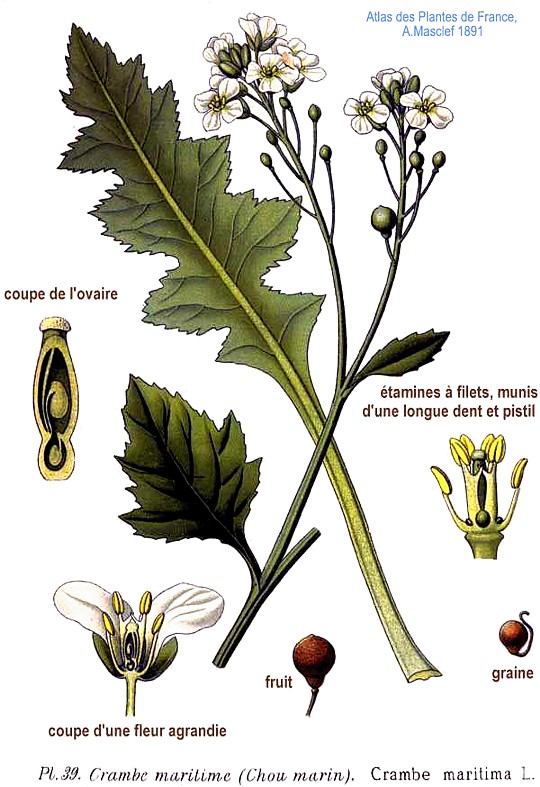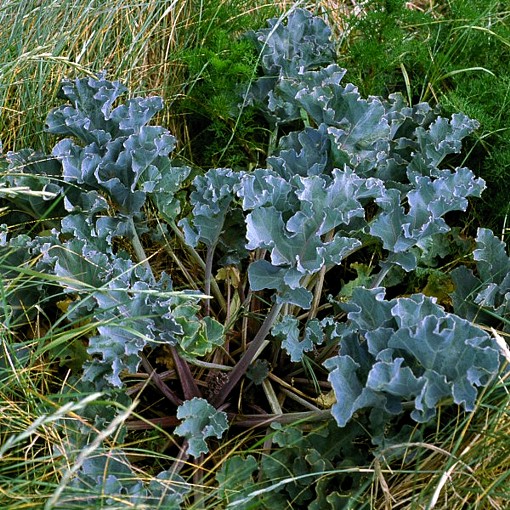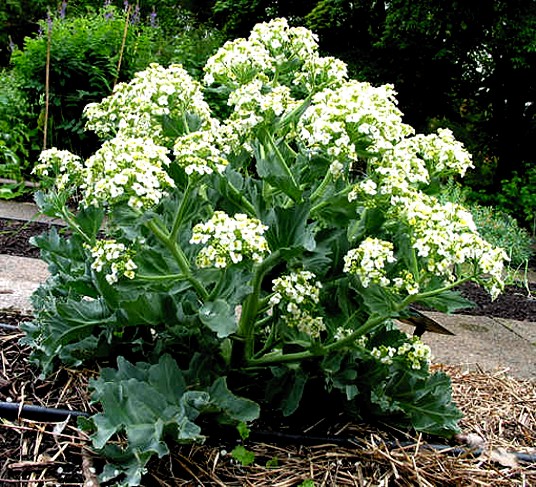Lessico
Cavolo marino
Crambe maritima

Al genere Crambe - dal greco krámbë = cavolo - appartengono piante erbacee della famiglia Crucifere o Brassicacee, proprie delle regioni temperate e frequenti soprattutto lungo le riviere marine; sono carnose, con fiori piccoli, bianchi o rosei, a 4 petali; i frutti sono siliquette. Nelle Isole Britanniche la Crambe maritima, nota comunemente come cavolo marino, č usata soprattutto per insalate.

Crambe
maritima
Seakale

Seakale is a halophytic perennial plant that grows wild along the coasts of Europe, from the North Atlantic to the Black Sea. It has large fleshy glaucous collard-like leaves and abundant white flowers. The seeds come one each in globular pods.
The plant is sometimes grown as an ornamental but its most common use is as a blanched vegetable. Along the coast of England, where it is commonly found above High Tide Mark on shingle beaches, local people heaped loose shingle around the naturally occurring root crowns in springtime, thus blanching the emerging shoots.
By the early 18thC it had become established as a garden vegetable, but its height of popularity was the early 19thC when seakale appeared in Thomas Jefferson's Garden Book of 1809, and it was served at the Prince Regent's Royal Pavilion in Brighton. The shoots are served like asparagus....steamed, with either a bechamel sauce or melted butter, salt and pepper. It is apt to get bruised or damaged in transport and should be eaten very soon after cutting, this may explain its subsequent decline in popularity.
However, given a rich, deep and sandy soil, it is easy to propagate and grow on from root cuttings available from specialist nurseries. Blanching may be achieved by covering it with opaque material or using a deep, loose and dry mulch. Seakale is more commonly used in Europe and only rarely grown in the United States.